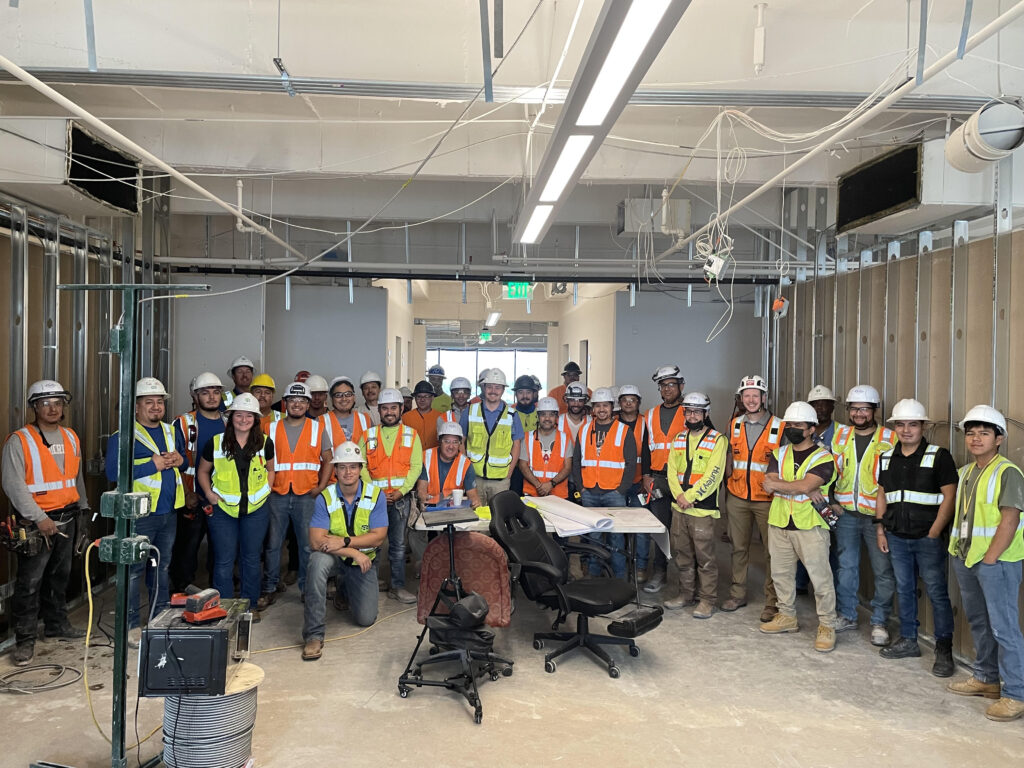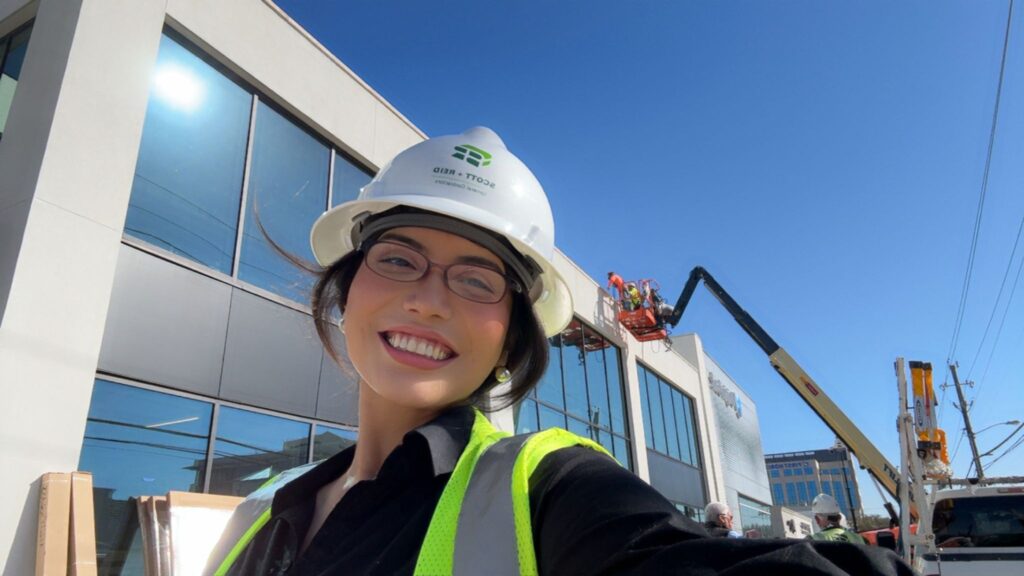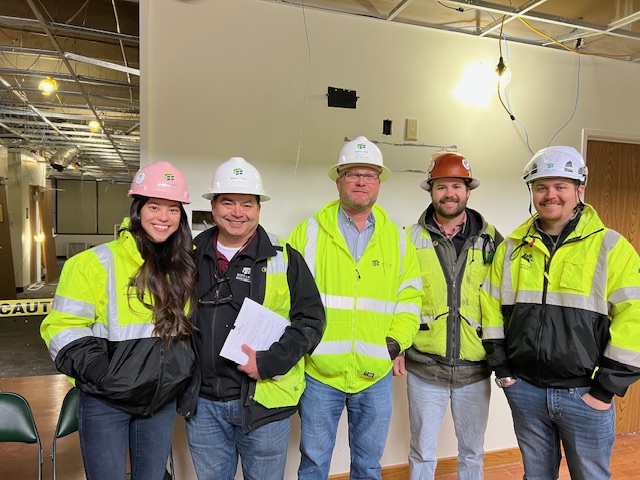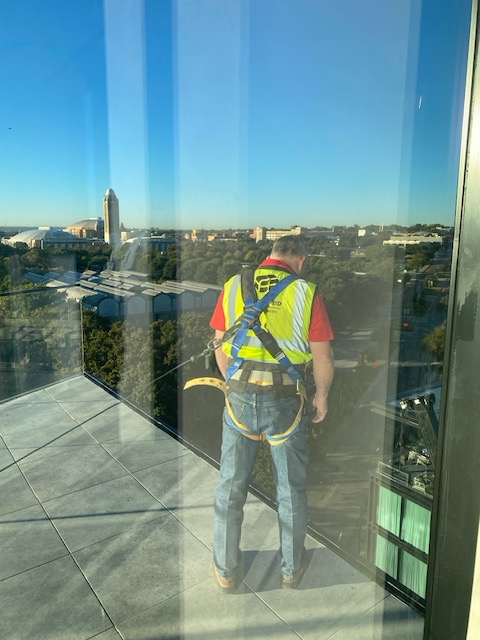We’re proud to share that our recent law firm office build-out for Polsinelli—a national Am Law 100 firm—wa...
Living Safety: A Conversation with Colin Harmon, Scott + Reid’s Safety Director
At Scott + Reid, safety isn’t a box to check—it’s a value we live by, every single day.
That mindset is embodied by Colin Harmon, our Safety Director at Scott + Reid, who was recently named 2024 TEXO Safety Professional of the Year—a recognition that speaks to the care, commitment, and innovation he brings to every jobsite.
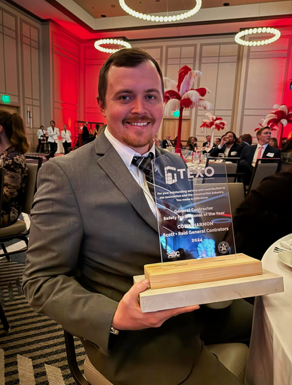
In honor of Construction Safety Week 2025, we sat down with Colin to talk candidly about what safety really looks like in the field, how we build a culture where people genuinely look out for one another, and why there’s no such thing as “just another day” when it comes to getting our teams home safe.
Whether you’re a superintendent, project manager, subcontractor, or just someone curious about the heart of a safe jobsite, Colin offers real insight—plus a few lessons that might just stick with you long after you finish reading.
How It Started: Building a Career Rooted in Safety
Q: How did you get your start in safety, and what made you want to pursue a degree in it?
Colin: I got my start working in residential construction during high school and college. Back then, I didn’t see a lot of safety procedures or training—people just kind of figured things out as they went. When I learned about the Occupational Safety and Health degree at Southeastern Oklahoma State University, it really caught my attention. I was already in the industry, and I saw how much of a difference proper safety education could make.
Earning that degree gave me a head start. I was exposed to a wide range of industries—residential, oil fields, general industry—and learned how safety principles apply across all of them. More than anything, it helped me understand how to turn technical knowledge into something practical and human: a culture that keeps people safe. And a lot of the relationships I built through that program still support the work I do today.
“Safety Is Culture”: Why Mindset Is Everything
Q: When we talk about safety, what’s the ultimate goal?
Colin: Ultimately, we want to make sure every person goes home in the same shape they showed up. That’s the core of it. But more than rules or policies, it’s about creating a culture where people care—about themselves, their coworkers, and the work.
People are motivated by different things—family, goals, pride in their craft. When we tie safety back to those personal values, that’s when it becomes real. You can’t force it—you have to build buy-in.
The Realities of Jobsite Safety
Q: What does a “perfectly safe” site look like to you?
Colin: Honestly, there’s no such thing. Jobsites are dynamic. The key is making sure everyone understands the hazards and knows how to protect themselves and others.
We stay focused on OSHA’s Fatal Four: falls, electrocution, struck-by, and caught-between incidents. These are the biggest risks in our industry. The challenge is shifting long-held mindsets—especially for folks who’ve been in the field for decades. But through communication, training, and trust, we’ve seen a lot of positive change.
What Safety Looks Like, Day-to-Day
Q: How do we drive a safe job site?
Colin: Each week, our superintendents complete a safety observation in Procore. They focus on specific areas—like ladders or open holes—take photos, and document what they see.
It’s not just about checking boxes. As the job changes, so do the risks. These observations help us keep pace and adjust in real time. And it all starts with solid planning. From day one, our site-specific safety plans cover everything from emergency contacts to how we’ll manage hazards unique to that job.
Raising the Bar with Skilled Teams
Q: What’s one of the biggest safety challenges in construction right now?
Colin: One of the biggest challenges we face is the skilled labor gap. We see more untrained labor entering the field, especially in subcontractor crews. That puts more pressure on us as general contractors to lead with education and mentorship—not just for our people, but for everyone on site.
We work hard to share knowledge and set a high standard, because a safe site only works if everyone buys in.
From Paperwork to Procore: Tech That’s Changed the Game
Q: How has your role evolved over the years?
Colin: The biggest shift is how digital everything’s become. Ten years ago, it was all paper forms and spreadsheets. Now with Procore, we can track, document, and respond faster than ever.
That frees up more time for what matters—being present on-site, solving problems, and supporting the team.
Looking Ahead: Innovation in Safety
Q: Are there any tools or tech you’re excited about?
Colin: Drones have been a great addition. Being able to get an overhead view helps us identify fall risks and site hazards you can’t always see from the ground.
Looking ahead, AI and predictive analytics will take things even further—helping us spot patterns and prevent incidents before they happen.
The Three-Legged Stool: Safety, Quality, Production
Q: How do you balance safety with tight schedules and budgets?
Colin: I use the three-legged stool analogy: safety, quality, and production. If one leg’s off, the whole thing falls.
Safety isn’t something that slows the job down—it actually keeps things running smoother in the long run. We plan better, communicate better, and avoid the kind of mistakes that cost time and money.
Why Safety and Morale Go Hand-in-Hand
Q: How does safety influence project success long-term?
Colin: First, there’s the financial side—lower incident rates mean better insurance and fewer claims. But beyond that, safety impacts morale.
If someone gets hurt, it affects the whole crew. When people feel respected and protected, they work better. And that shows in the final product.
What Safety Culture Really Looks Like
Q: Do you have a moment where you saw the culture shift in action?
Colin: At a recent project, we had a situation where our crews were going to be working on a high balcony with no guardrails installed. We found a way to build a temporary handrail from the glass channel that met OSHA standards and kept everyone safe.
That solution didn’t come from a manual—it came from a superintendent calling and asking, “How do we do this the right way?” That’s when you know the culture is working.
When Preparation Pays Off
Q: Has there been a time when safety prep really made a difference?
Colin: We had a worker suffer a seizure on site recently. You can’t plan for that exact moment—but you can plan how to respond. We had emergency contacts ready, knew the nearest hospital, and were able to provide help right away as our superintendents are trained in first aid/CPR/AED. Situations like that remind you why all the prep, training, and planning matters.
Why It All Matters
Q: What program has had the biggest impact?
Colin: Our Procore safety observations have been a game changer. When superintendents are actively documenting and flagging risks, it creates accountability—and it gets subs involved too.
It’s not about policing—it’s about partnering. That’s how you build trust and drive change.
Final Thoughts
At Scott + Reid, safety isn’t just about avoiding incidents—it’s about building a culture of care. It shows up in the way we plan, the way we communicate, and the way we look out for each other.
Thanks to Colin—and all our teams—for leading the way, and for proving that safety isn’t something we add to the job. It’s how we do the job.



